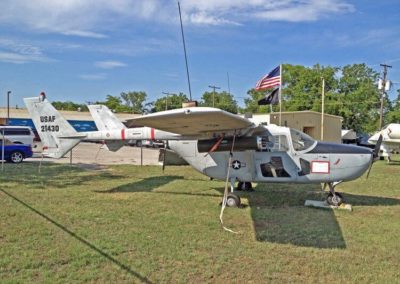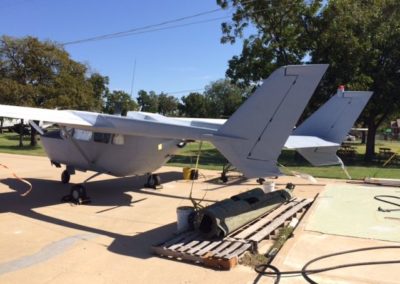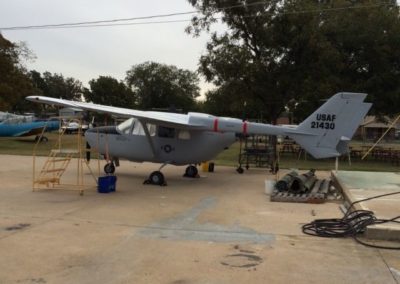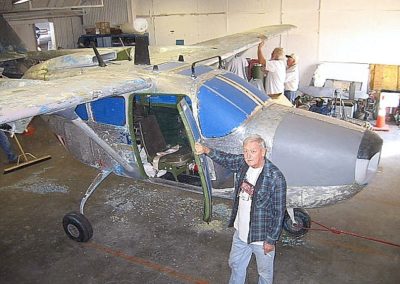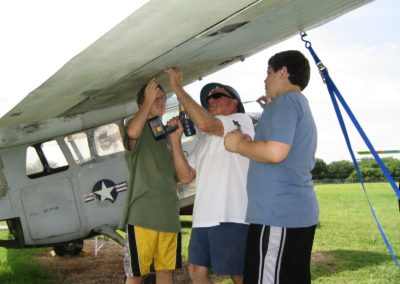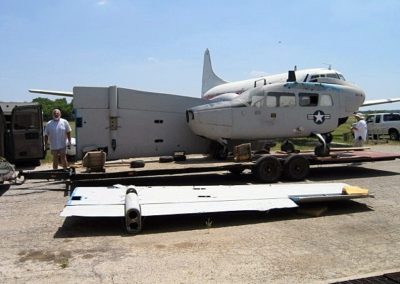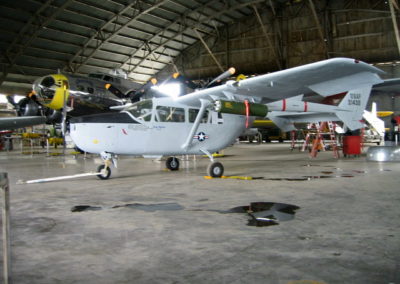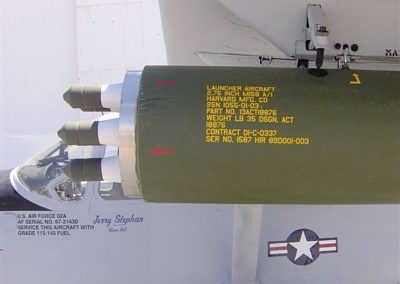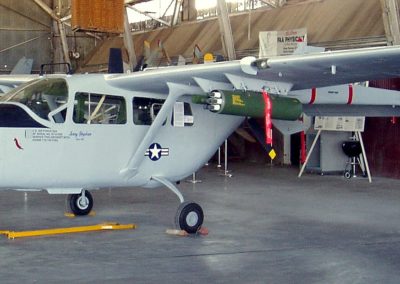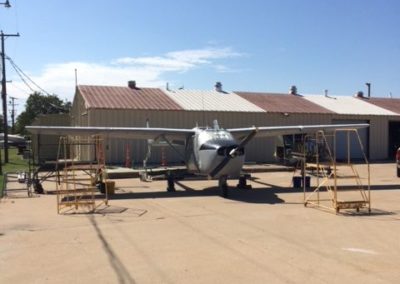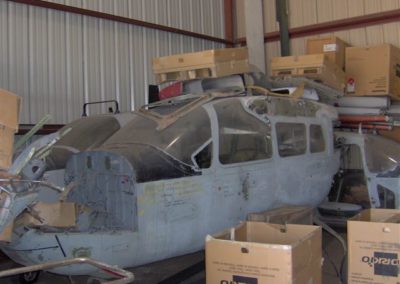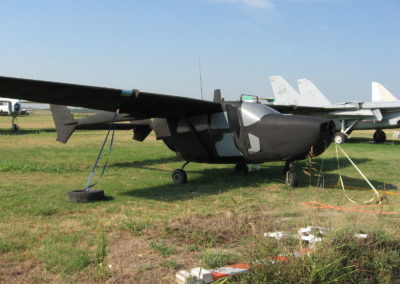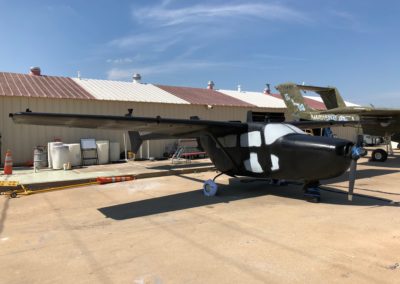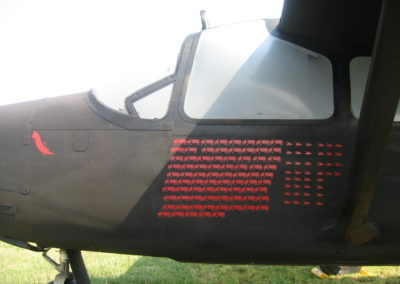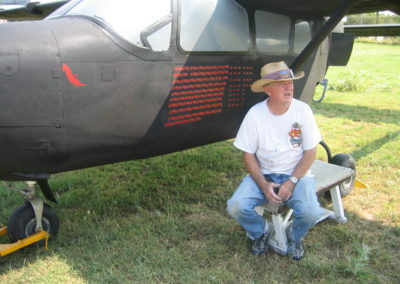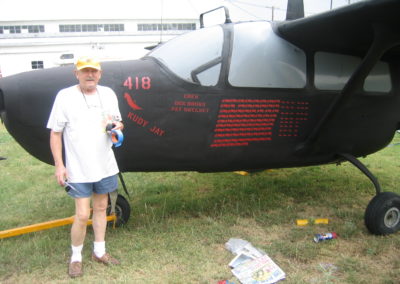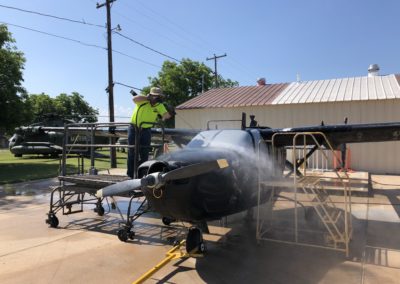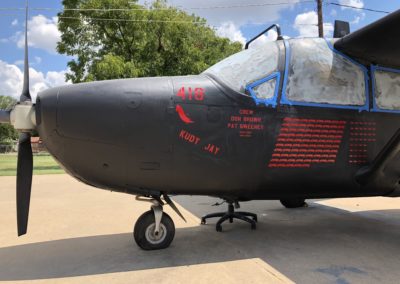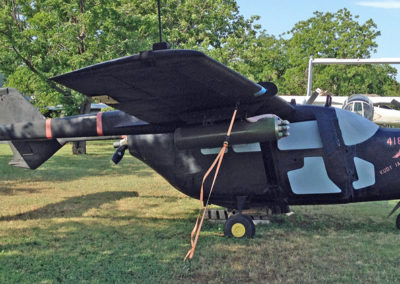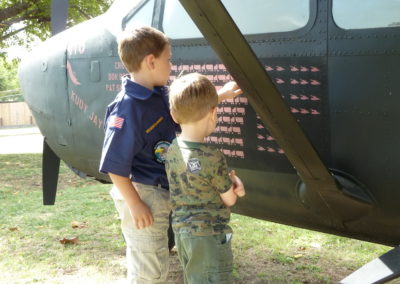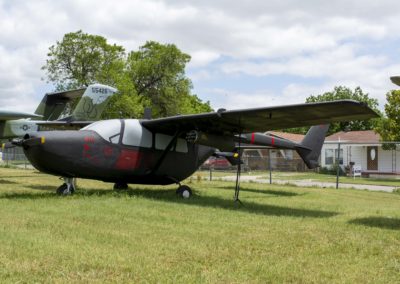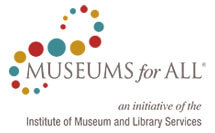O-2A Skymaster “The Duck”
Known as the “Oscar Deuce” or “The Duck,” the O-2 is a military version of the Cessna 337 Super Skymaster.
Warbird Overview
Known as the “Oscar Deuce” or “The Duck,” the O-2 is a military version of the Cessna 337 Super Skymaster.
ABOUT THE O-2A SKYMASTER “THE DUCK”
Known as the “Oscar Deuce” or “The Duck,” the O-2 is a military version of the Cessna 337 Super Skymaster.
The Cessna Aircraft Company of Wichita, Kansas, built and sold a twin-engine civilian aircraft known as the Skymaster. The aircraft was unique in that it had one engine in front of the cabin, like most Cessnas, and one engine behind the cabin. The Cessna 336 first flew in 1961. In 1965, the Cessna 337 Cessna Super Skymaster was introduced. It was very similar to the 336, but had more powerful engines and retractable landing gear.
The military evaluated this aircraft as a replacement to the 1940s-era Cessna L-19/0-1 Birddog. The aircraft began service with the US military in 1967. The aircraft were very effective as Forward Air Controllers (FACs). 178 were lost in Vietnam. Over 500 were constructed and the last was retired in 2010. The aircraft were nicknamed “Oscar Deuce” or “The Duck.”
Fact #1
This aircraft has two engines – one in the front and one in the back.
Fact #2
This O-2 is a representation of a daytime Forward Air Control aircraft of the 23rd Tactical Air Support Squadron in South East Asia.
Fact #3
This is one of our open cockpit aircraft
Manufacturer: Cessna
Crew: 2 – pilot and observer
Length: 29.75 feet
Wingspan: 38.17 feet
Height: 9.17 feet
Empty Weight: 2,848 pounds
Loaded Weight: 5,400 pounds
Powerplant: 2 ×Continental IO-360C six-cylinder engines, 210 hp each
Max. Speed: 200 mph
Range: 1,325 miles
Service Ceiling: 18,000 feet
Rate of Climb: 1,180 feet/minute
The Fort Worth Aviation Museum has two Cessna O-2s. This one — Cessna O-2A-CE Super Skymaster — Air Force Serial No. 67-21430, c/n 377M-0136, was built in 1967 in Wichita, Kansas, and delivered to US Air Force on November 20, 1967.
It first assignment was with the 504th Tactical Air Support Group (TASG), Pacific Air Forces, Nha Trang Air Base, Vietnam, beginning in January 1968. In August 1969, the aircraft was transferred to Cam Ranh Bay Air Base and Da Nang Air Base, Vietnam.
In September 1971, this O-2 went to the 110th TASG, Air National Guard, at Kellogg Field in Battle Creek, Michigan. In June 1972, it went to the 105th TASG at Westchester County Airpor in New York.
As part of the draw-down of forces in Southeast Asia, aircraft from the Vietnam conflict were added to make up the allocated number to the Group. However, the 105th had to actually rebuild most of the Vietnam Veteran aircraft, which had been through the most rigorous of combat operations in South Vietnam. The 105th made national news through their program of assisting local governmental health agencies in the detection of violations of water and stream pollution laws. 105th pilots, on the kind of observation missions they would be doing in combat, initiated a program of photography and reporting to local civic officials. The local health agency would then send its own aircraft up to take similar photographs for evidence and possible action. The 105th was awarded the Governor’s Trophy for 1974, signifying the outstanding flying unit of the New York Air National Guard for that year.*
In October 1974, the aircraft went to 115th TASG, Truax Field, Wisconsin. In May 1976, the O-2 moved to its last active duty assignment — the 602nd Tactical Air Control Wing (TACW) at Bergstrom Air Force Base in Austin, Texas. In July 1979, the aircraft was transferred to Davis-Monthan Air Force Base in Arizona and was eventually dropped from the Air Force inventory in March 1980. It was transferred to a public agency (FAA Registry N37542). The Fort Worth Aviation Museum acquired the aircraft in 2001. Locally, O-2s were used by Raytheon at Meacham Field during the late 1960s and early 1970s to develop the Pave NAIL laser designator system.
*Reference: http://en.wikipedia.org/wiki/105th_Airlift_Wing
Air Force Skymaster (gray) to get freshened up and cleaned. More wing hanging items to be added (not sure what at this time). Some minor touchups on missing light covers and fiberglass covers to be primed painted and sealed.
Note: Scheduling is always a moving target depending on weather and workload. All schedules are subject to changes.
Become a Member!
FLIGHT SIMULATOR
Events
Events
HOURS
Saturday: 9AM-2PM
Sunday: 11AM-3PM
